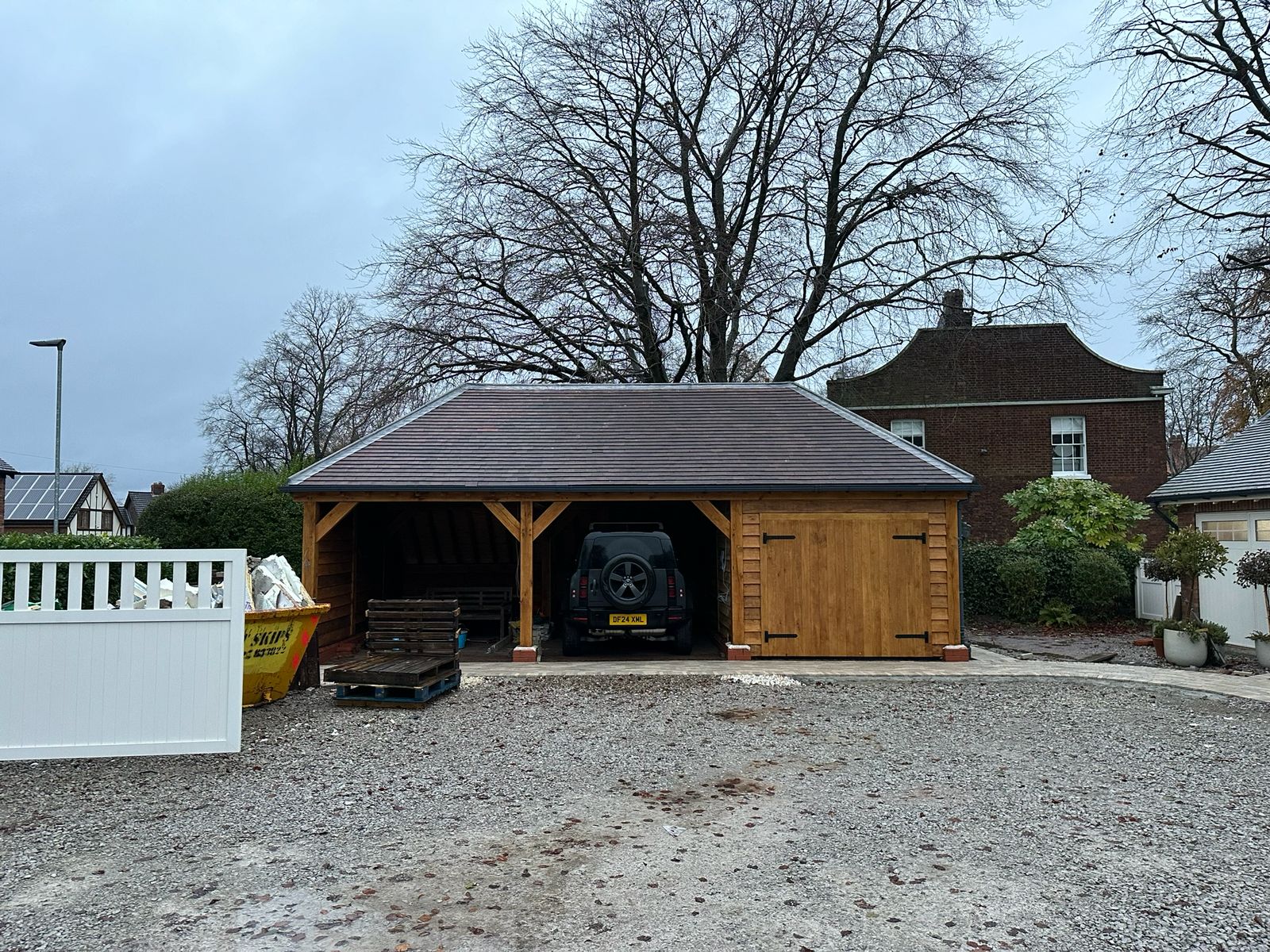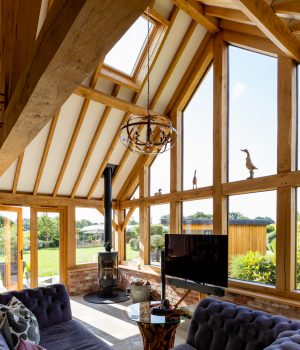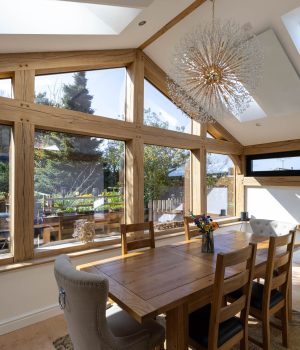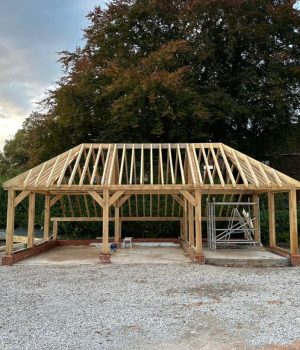Oak frame construction is a timeless method that combines structural integrity with natural beauty. For builders, understanding the nuances of oak frame installation—especially when working with green oak—is essential for a smooth build, long-lasting results, and happy clients. Whether you’re new to timber frame construction or looking to refine your process, here’s what you need to know.
1. Understand Green Oak and Its Natural Movement
One of the most important things to understand about green oak (freshly sawn oak) is that it moves and shrinks as it dries. This is entirely normal—and even desirable in traditional oak frame construction—but it means allowances must be made during the design and installation process.
Tips:
Expect shrinkage of around 5–10% tangentially. When designing our oak frames, we factor this in so that the joints strengthen as it dries and you don’t have to worry about it!
Avoid rigid fixings that could restrict natural shrinkage. Oak pegs are ideal, as they move and dry along with the frame.
Communicate clearly with your client about the drying process. It’s important to manage expectations, so that the client isn’t surprised or alarmed when the oak starts to split and crack.
2. Precise Foundations Are Crucial
Oak frames are designed to be incredibly strong, but they rely on accurate foundations. As a builder, it’s critical to work closely with the oak frame manufacturer to ensure that sole plates, pads, and levels match the frame’s layout precisely.
Pro tip: Many oak frame suppliers will provide foundation setting-out drawings — follow these exactly to avoid costly adjustments on site.
3. Weather Protection and Site Storage
While oak is a durable hardwood, prolonged exposure to weather or incorrect storage before installation can cause surface staining. If your project timeline includes any delay between delivery and raising, proper site storage is a must.
Protect your frame by:
– Storing off the ground on bearers.
– Using breathable covers to shield timber from direct rain and sun.
– Ensuring good ventilation around the stacked timber.
4. Collaboration With the Oak Frame Supplier
No two oak frames are exactly the same. Working closely with your oak frame supplier or manufacturer ensures your installation goes smoothly. They can offer guidance on:
– Required lifting equipment and estimated time to install
– Installation sequencing and safety advice
– A collaborative approach reduces risk and keeps the build on schedule.
5. Health & Safety During Installation
Oak frame erection often involves heavy timber sections and crane lifts, which require careful planning. Builders must factor in:
– Safe access for cranes or telehandlers
– Proper lifting gear and trained operatives
– Temporary bracing to secure the structure during installation
If the oak frame is part of a hybrid structure (e.g. mixed with SIPs or masonry), plan how trades will interact during and after frame installation.
Final Thoughts: Setting Builders Up for Success
Successful oak frame installation relies on understanding the material, planning ahead, and working closely with experienced frame suppliers. From precise foundations to careful coordination of trades, the more you know, the smoother the project will go.
For builders who want to deliver outstanding results with green oak construction, taking time to get the details right pays off—both structurally and aesthetically.
Need More Guidance?
We work closely with builders across the UK to provide detailed installation advice and on-site support. Contact us today to discuss your upcoming oak frame project.




